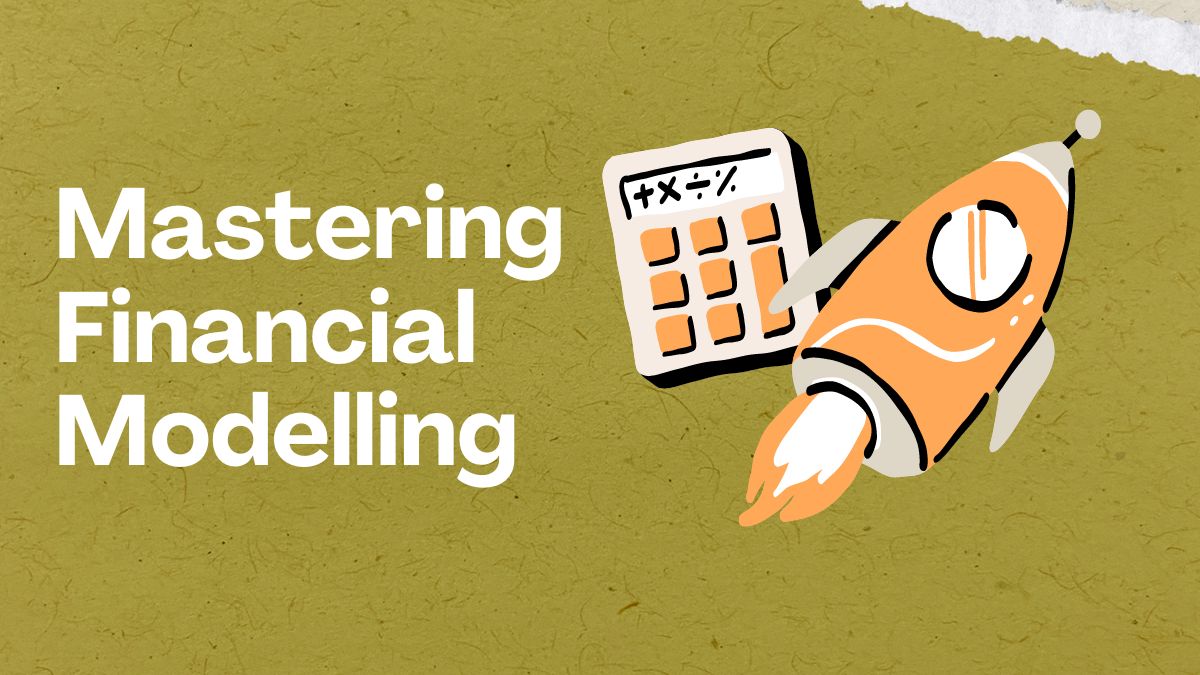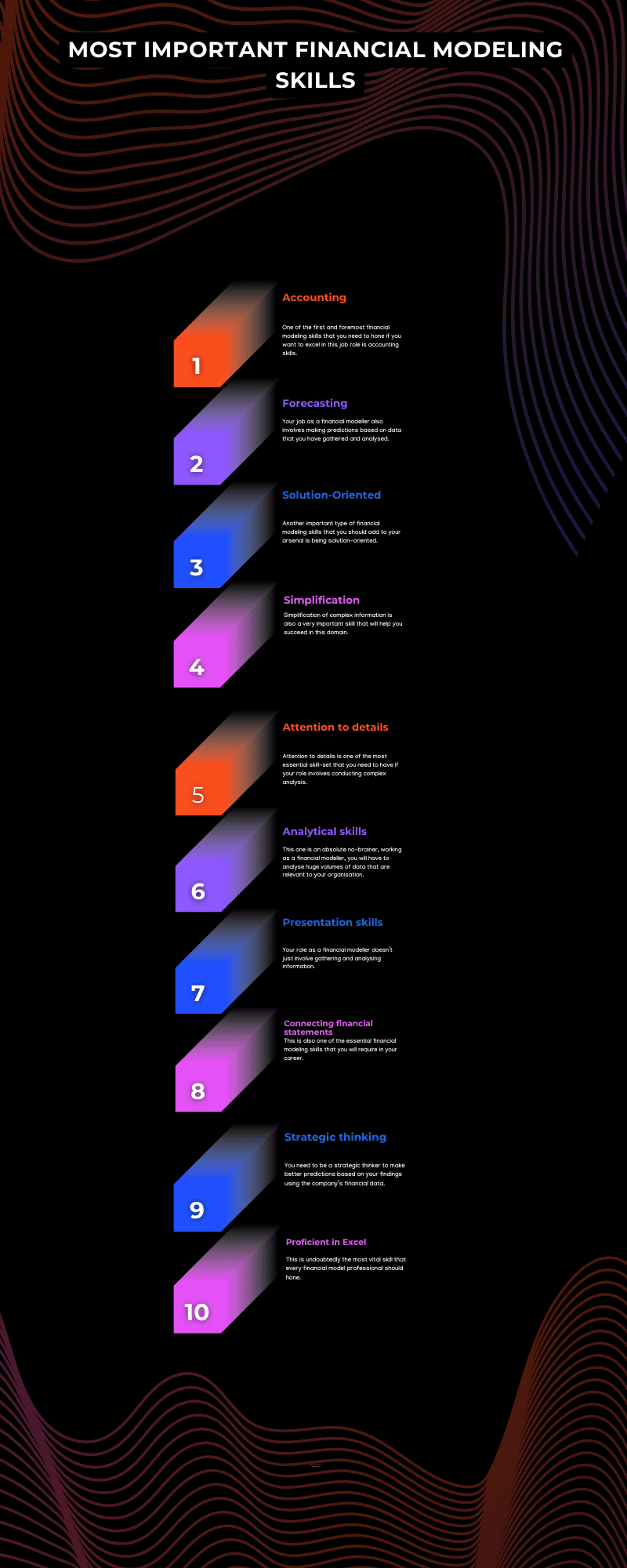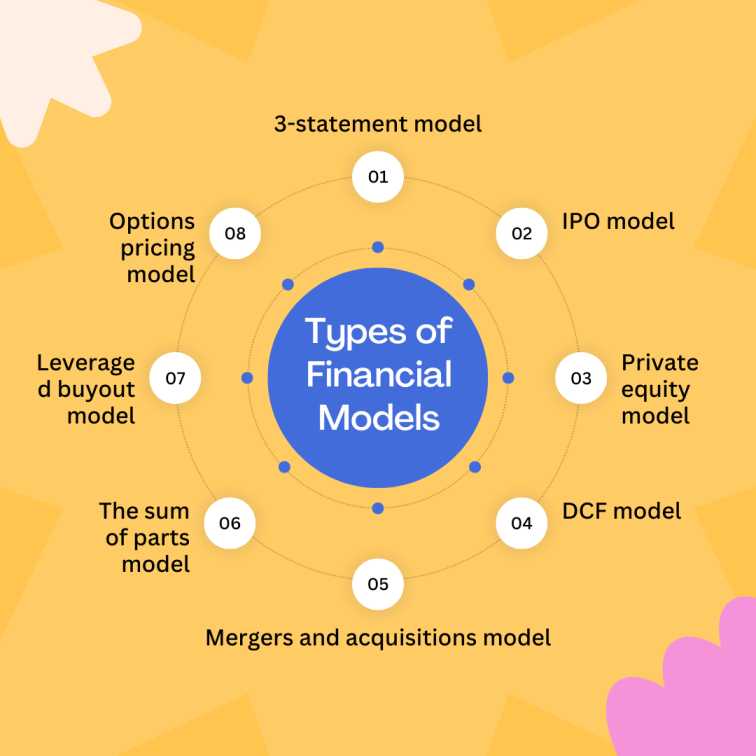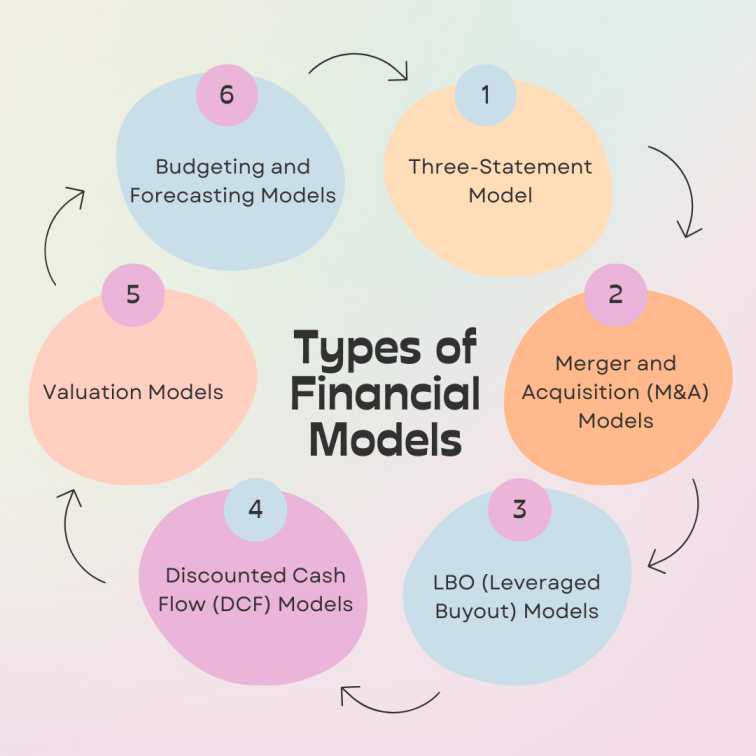Financial modelling is a vital component of financial analysis. Building financial models is extremely crucial to the success of a business or project.
Financial modelling offers a structured approach to analysing investments, assessing business performance, and making well-informed decisions. It is a versatile tool that can be applied to many complex financial scenarios.
To construct a sturdy and precise financial model, it is crucial to comprehend its fundamental elements and the essential financial metrics and ratios used in financial analysis. This article will help you master financial modelling by exploring these components and various financial modelling techniques.
Basics of Financial Modelling
Financial models are the income statement, balance sheet, and cash flow statement at their core. The income statement, also known as the profit and loss statement, presents a company’s revenues, expenses, and net income over a specific period. The balance sheet offers snapshots of a company’s financial positions at specific points in time, displaying its assets, liabilities, and equity. The cash flow statement tracks the movement of cash in and out of a business, highlighting its cash inflows from operations, investments and financing activities.
In addition to these fundamental components, financial models depend on assumptions, which are estimates or forecasts about future events. These assumptions consider sales growth, operating costs, interest rates, tax rates and many other factors. The accuracy of a financial model relies heavily on the quality of its assumptions.
Key Financial Metrics and Ratios
Critical financial metrics and ratios help us evaluate a business’s financial performance. Profitability metrics, including gross profit margin, operating profit margin, and net profit margin, gauge a company’s capability to generate profits from its operations. Liquidity metrics (such as the current and quick ratios) evaluate a company’s ability to meet its short-term obligations. Solvency metrics (such as the debt-to-equity ratio and interest coverage ratio) assess a company’s long-term financial stability and capacity to service its debt.
Data Sources and Validation
Reliable and current financial data is indispensable for constructing dependable financial models. Various sources for acquiring financial data include financial statements, market data, industry reports, and government databases. It is essential to validate the data used in financial models to ensure its accuracy and dependability. Data validation entails examining for errors, inconsistencies, and data outliers. By validating the data, you can enhance the credibility and accuracy of your financial models.
Leveraging Excel for Financial Modelling
Excel is extensively utilised for financial modelling due to its robust capabilities. Mastering crucial Excel functions and formulas enables the creation of adaptable models that can adjust to changing conditions and assumptions.
Key Excel functions for financial modelling comprise SUM, IF, VLOOKUP, and PMT. The SUM function calculates the total of a cell range, while the IF function allows for different calculations based on specific conditions. VLOOKUP is employed to locate a value in a table and retrieve a corresponding value from another column. The PMT function computes the periodic payment for a loan or investment.
Aside from these fundamental functions, numerous other Excel functions, including AVERAGE, MAX, MIN, COUNT, and COUNTIF, can be utilised in financial modelling. Multiple calculations and analyses can be performed within financial models by comprehending and effectively using these functions.
Creating dynamic financial models involves using formulas and references linked to data cells, enabling easy model updates when assumptions or input data change. Incorporating flexibility into models permits the analysis of different scenarios and the assessment of the impact of various factors on financial results.
Advanced Excel techniques can further improve the efficiency and functionality of financial models. Data validation ensures that entered data meets specific criteria, averting errors and inconsistencies. Pivot tables are valuable for summarising and analysing large datasets, and facilitating easy identification of trends and patterns. Macros automate repetitive tasks, saving time and minimising the risk of errors.
Building a Solid Financial Model
When building a robust financial model, it is crucial to clearly define its scope and objectives. By outlining the model’s purpose, you can ensure that it addresses the specific business inquiries you need to address, enabling you to concentrate on the most relevant aspects and avoid unnecessary complexity.
Developing Our Assumptions
The formulation of assumptions is another pivotal phase in creating a financial model. Assumptions are estimations or forecasts about future events that serve as the groundwork for the model. These assumptions can cover sales growth, operating costs, interest rates, tax rates etc. We must identify and make rational assumptions based on available data, industry trends, and expert insight.
Constructing Our Financial Statements
After establishing the assumptions, the next step is to construct the financial statements. The primary financial statements consist of the income statement, balance sheet, and cash flow statement. These statements are interconnected, and changes in one can impact the others. A comprehensive financial model can be developed to provide a clear overview of a company’s financial performance and position by constructing these statements accurately and consistently.
Scenario Analysis and Sensitivity Testing
Scenario analysis and sensitivity testing are valuable tools for assessing the impact of different assumptions on model outcomes. Scenario analysis involves creating alternative scenarios based on different sets of assumptions. We can evaluate the potential risks and rewards associated with various decision-making options by analysing these options. Sensitivity testing involves examining how the model’s results change when key assumptions are varied. This can help you identify the assumptions impacting the model’s outcomes and focus attention on those areas.
Best Practices for Effective Financial Modelling
Ensuring the accuracy and reliability of financial models requires validating model results and conducting regular audits. Identifying discrepancies and making necessary adjustments is possible by comparing model outputs to actual results. Regular audits can also identify potential errors or biases in the model.
Communicating Model Outputs
Stakeholders’ understanding of the implications of the model’s findings relies on effective communication of model results. We can use clear visualisations, such as charts and graphs to convey complex information in a digestible manner. Accompanying the visualisations with concise explanations provides context and highlights key takeaways.
Ethical Considerations
Ethical considerations are crucial in financial modelling to avoid biases in the model’s assumptions and ensure transparency and lack of bias. Maintaining the credibility and integrity of financial models is possible by providing clear documentation of the model’s inputs, assumptions, and outputs and adhering to ethical principles.
Types of Financial Models
There are many financial modelling techniques we can use for financial analysis. Let us look at some popular financial models.
DCF Valuation and Capital Budgeting
Discounted cash flow (DCF) valuation is a fundamental method used to estimate the intrinsic value of an asset or investment. We project future cash flows and discount them to their present value using a discount rate in this type of financial modeling and valuation. DCF is widely used in capital budgeting decisions, where it helps assess the profitability of potential investments and determine whether they are worthwhile.
To perform DCF valuation, you need to forecast the future cash flows that an asset or investment is expected to generate. This involves making assumptions about sales growth, operating costs, capital expenditures, tax rates and other factors. Once the cash flows are projected, they are discounted back to their present value using a discount rate that reflects the risk associated with the investment. The present value of the future cash flows represents the original value of the asset or investment.
Mergers and Acquisitions Analysis
Financial models play a crucial role in evaluating merger and acquisition opportunities. Analysts can assess the potential synergies, risks, and financial implications of a merger or acquisition by constructing detailed financial models of the target company and the combined entity.
Key considerations in merger and acquisition analysis include:
- Synergy analysis: Identifying potential cost savings, revenue growth, or other benefits that may arise from a combination of the two companies.
- Valuation: Determining the fair value of the target company using various valuation methods, such as DCF, comparable company analysis, and precedent transaction analysis.
- Financing: Evaluating the financing options available for the acquisition and assessing the impact of debt on the combined entity’s financial profile.
- Post-merger integration: Developing a plan to integrate the two companies’ operations and ensuring a smooth transition.
Risk Management and Scenario Planning
Financial models can assess and manage risk by incorporating uncertainty into the analysis. Stress testing involves subjecting a model to extreme scenarios, such as economic downturns or market crashes, to evaluate the model’s sensitivity to risk factors. Scenario planning involves creating different possible scenarios and analysing the potential impact of all these scenarios on the business’s financial performance.
By conducting stress testing and scenario planning, you can identify potential risks and develop contingency plans to mitigate their impact. This can help you make more informed decisions and improve the resilience of your business.
Industry-Specific Modelling
The specific challenges and considerations in financial modelling can vary depending on the industry. For example, modelling a technology company may require forecasting research and development expenses and assessing the impact of technological advancements. Modelling a healthcare company may involve considering factors such as regulatory changes, drug development pipelines and insurance reimbursement rates.
Understanding the unique characteristics of your industry is essential for developing accurate and relevant financial models. By considering industry-specific factors and using appropriate modelling techniques, you can gain valuable insights into your business and make informed decisions.
Wrapping Up
Mastering the basics of financial modelling, and using tools such as Excel efficiently can help you develop into a skilled financial analyst who can make well-informed and influential decisions. It is also important to keep the best practices in mind.
If you wish to become a financial analyst, enrol in Imarticus Learning’s Postgraduate Financial Analysis Program. This financial analysis course will teach you all the essential financial modelling techniques needed to become a financial analysis expert.
Frequently Asked Questions
What is financial modelling and how is it different from financial statements?
A financial model predicts future financial performance, while a financial statement documents a company’s past financial activities.
How can I improve the accuracy of my financial model?
Enhance the accuracy of your financial model by updating it regularly with the latest data, using reliable assumptions, and validating the results against actual performance.
What are some common mistakes made in financial modelling?
Common errors in financial modelling include using outdated data, making unrealistic assumptions, and overlooking risk factors.
How can I use financial modelling to make better investment decisions?
Utilise financial modelling to evaluate potential returns and risks of investments, compare investment options, and make well-informed decisions.















